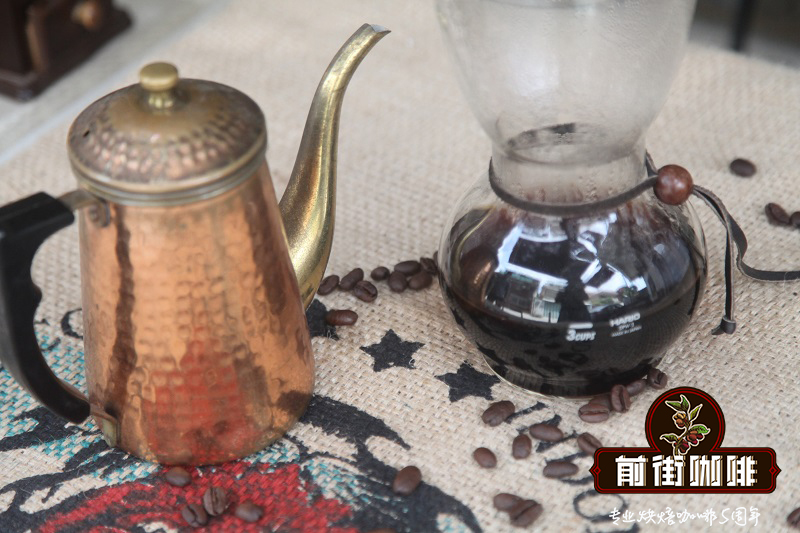Ethiopian Solar Sidamo G1 Coffee beans description of flavor characteristics of Sidamo coffee beans

Ethiopia Sunshine West Dharma Yadi G1 Cup Test 95 points production area: Michicha & Kelenso Moconissa Town, Sidama Province Variety: Typica & Heirloom (Local Native species) production: Yadi (Ardi) Local Coffee Farmer altitude: average 1900 m Grade: sun (highest grade G1 by ECX) Annual rainfall: 1400-1800mm soil Reddish brown flavor features: wild berries, Mango, pineapple, golden kiwi, lemon sandwich biscuit, elegant acid, smooth lines. Light fermented wine, rich berry aromas, mild, clean and balanced, lively and varied fruit in the finish. Ripe berry flavor is more mild and full-bodied. Award record: 2010 East African Fine Coffee Association (EAFCA) Solar Group No. 1 CoffeeReview June 2014 94 points! It's 93 points in April 2014! 2010-04-95! Introduction: there are eight main producing areas of Ethiopian coffee: Ekempti, Limu, Illubabor, Djimma, Harrar, Teppi/Bebeka, Sidamo, Yirgacheffe. Ethiopian coffee is highly rated in Taiwan, especially the three well-known producing areas of Ethiopia, namely Harrar, Sidamo and Yirgacheffe. Sidama province is located in the south of Ethiopia, with Arsi province in the north, Bale province in the east and Gamu Gofa province in the west. The jurisdiction of Sidama province includes two well-known producing areas, Yirgacheffe and Kochere. The industry is dominated by agriculture, and the coffee growing area is located around the East African Great Rift Valley (Great Rift Valley). The Sidamo producing area (Sidama) is located in southern Ethiopia. The industry here is dominated by agriculture, and the coffee growing area is located around the East African Great Rift Valley (Great Rift Valley). The largest town in Sidama province is Hawassa, which is an important local coffee export distribution center. The coffee flavor of Sidamo is very diverse, because of the different soil composition, regional microclimate and countless native coffee varieties, the coffee produced in each urban area has obvious differences and characteristics. Ardi is located in the southern part of Guji and Oromia, adjacent to Sidama and Gedeo. This batch is produced in a small village near the town of Michicha & KelensoMoconissa in the Guji producing area of Sidama province. There are seven hundred small coffee farmer families under the Ardi cooperative, named Ardi after the discovery of 4.4 million-year-old fossilized female remains in 1992. The treatment of Ardi is quite meticulous. Ripe cherries are picked artificially and dried on a high African scaffolding for three weeks. Throughout the 3-inch drying process, the workers turn it every two hours and stir it by hand every day to ensure uniform drying, ensuring the sun-ripe coffee cherry fruit with the same quality and drying into the final product. Its improved sun drying method aims at two shortcomings of the traditional method: when picking beans, only crimson coffee cherries are fully ripe. Before exposure, the beans will be screened for defective beans in the treatment plant to make the beans look average in size and maturity. Then, use a tall wooden frame or a whole scaffolding to make the sun, which can avoid the risk of beans smelling on the ground. In the process of exposure, take good care of beans, so that coffee beans can be evenly exposed to water loss; every three to five days, coffee workers will manually screen out bad moldy beans. Therefore, by the time the exposure is completed, before the beans enter the market to remove the peel and flesh, a bright crimson coffee cherry has already been tanned with black coffee with excellent shell raw beans.
Important Notice :
前街咖啡 FrontStreet Coffee has moved to new addredd:
FrontStreet Coffee Address: 315,Donghua East Road,GuangZhou
Tel:020 38364473
- Prev

Boutique Coffee | introduction of Top Blue Series B23 Strawberry Flavor in Ipanema Manor, Brazil
Brazil's top blue series B23 strawberries (Ipanema Premier Cru BLUE B23 Strawberries) countries: Brazil: South Minas province, Serra da Mantiqueira-Fazenda Rio Verde block altitude: 1157-1300 m treatment: sun varieties: yellow bourbon flavor: strawberry jam, red grapes, sweetness, fermented aroma Brazil
- Next

Rwanda Coffee | characteristics of Sun Bourbon Flavor in Elephant Cooperative
Country: Rwanda: elephant cooperative altitude: 1700 meters above sea level: bourbon treatment: sun flavor: lemon and orange blossom aromas with caramel sweetness, Darjeeling black tea velvet taste, and orange peel, raspberry, cocoa rich changes, distinct layers. More than 95% of the coffee varieties in Rwanda are Bourbon, which is grown in fertile volcanoes.
Related
- Detailed explanation of Jadeite planting Land in Panamanian Jadeite Manor introduction to the grading system of Jadeite competitive bidding, Red bid, Green bid and Rose Summer
- Story of Coffee planting in Brenka region of Costa Rica Stonehenge Manor anaerobic heavy honey treatment of flavor mouth
- What's on the barrel of Blue Mountain Coffee beans?
- Can American coffee also pull flowers? How to use hot American style to pull out a good-looking pattern?
- Can you make a cold extract with coffee beans? What is the right proportion for cold-extracted coffee formula?
- Indonesian PWN Gold Mandrine Coffee Origin Features Flavor How to Chong? Mandolin coffee is American.
- A brief introduction to the flavor characteristics of Brazilian yellow bourbon coffee beans
- What is the effect of different water quality on the flavor of cold-extracted coffee? What kind of water is best for brewing coffee?
- Why do you think of Rose Summer whenever you mention Panamanian coffee?
- Introduction to the characteristics of authentic blue mountain coffee bean producing areas? What is the CIB Coffee Authority in Jamaica?

